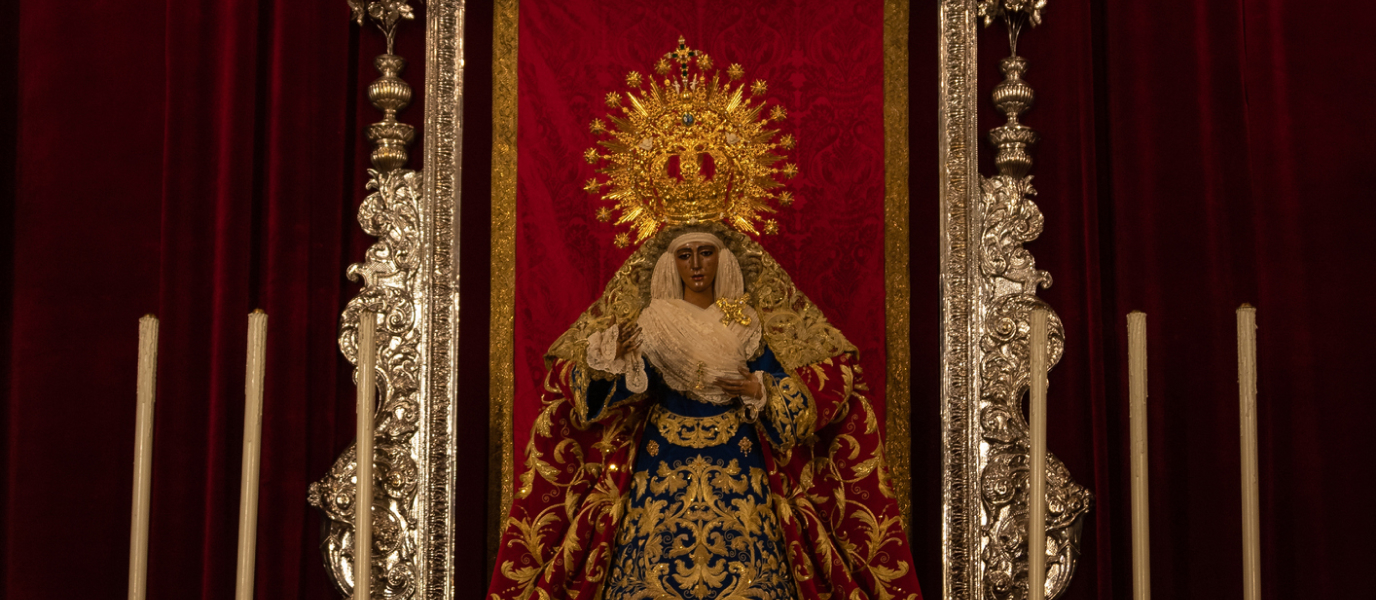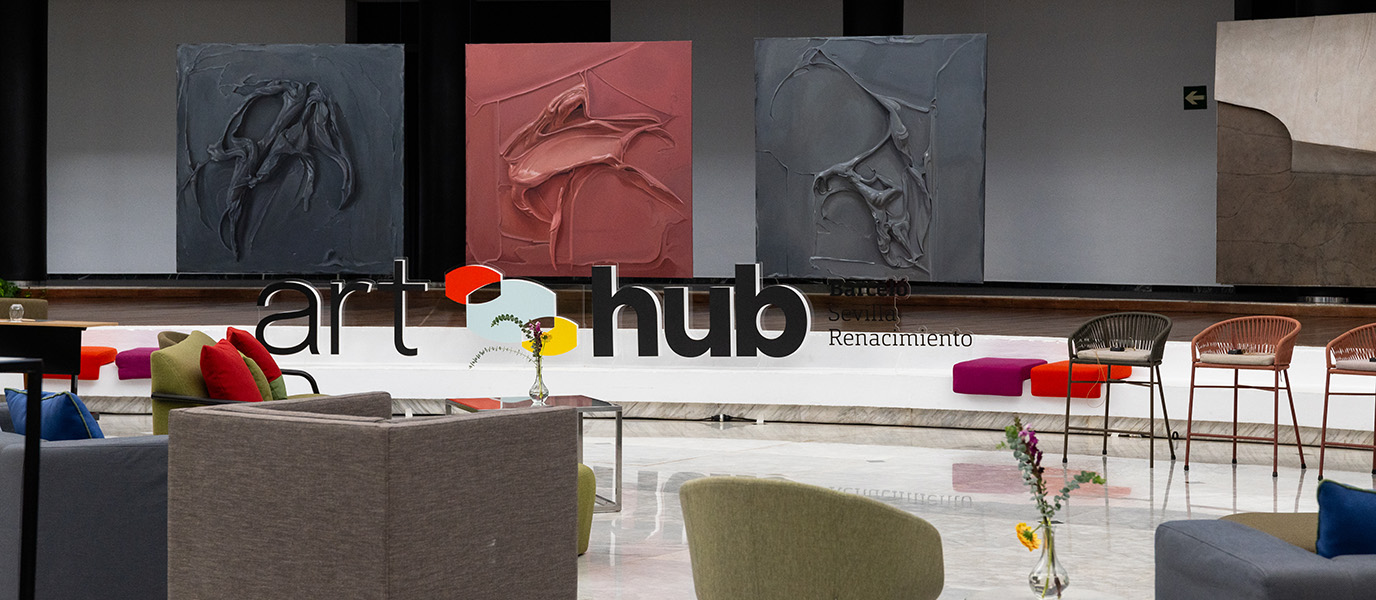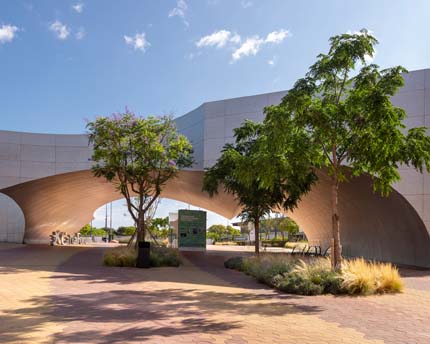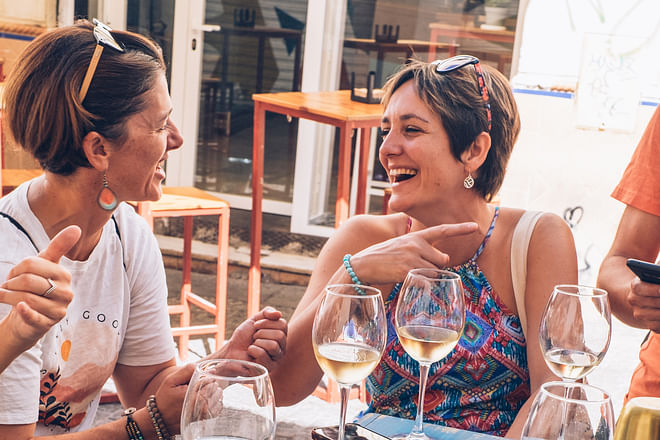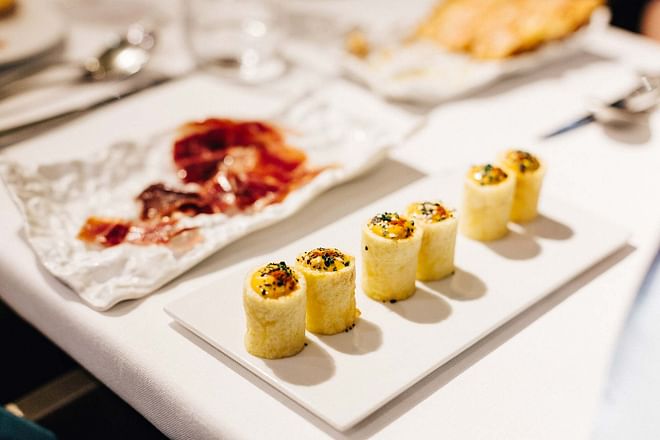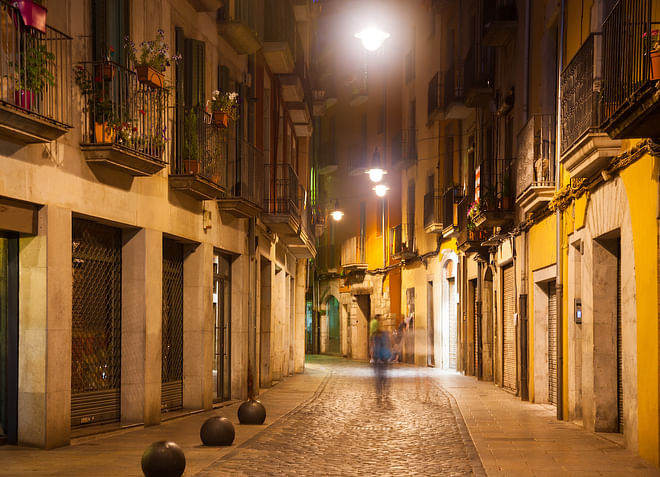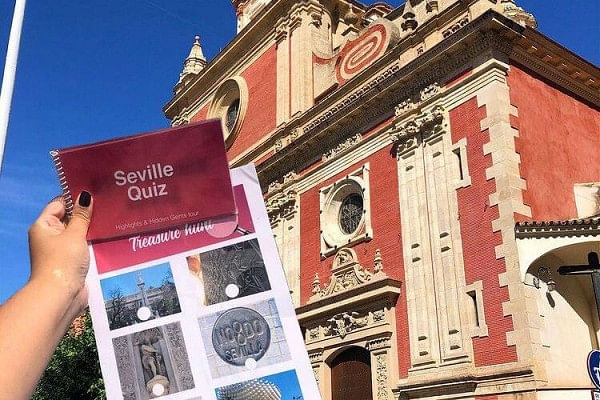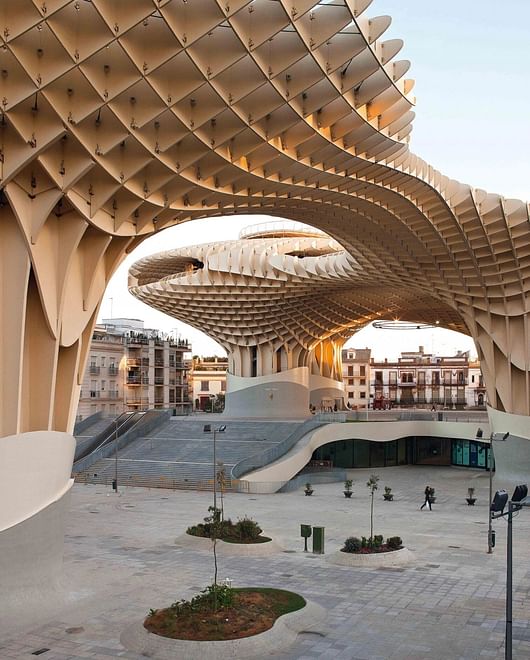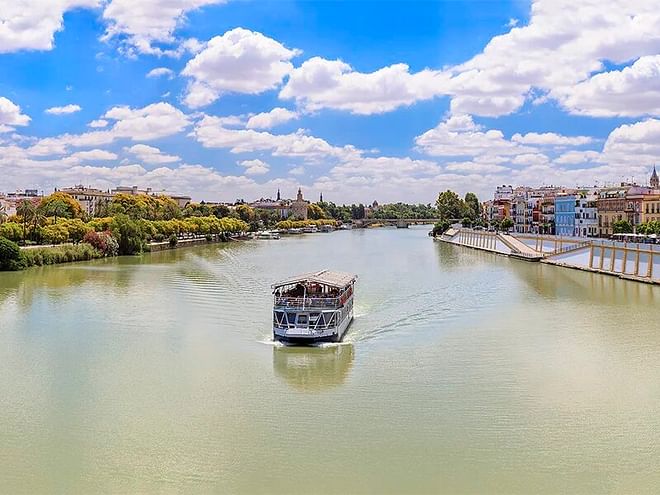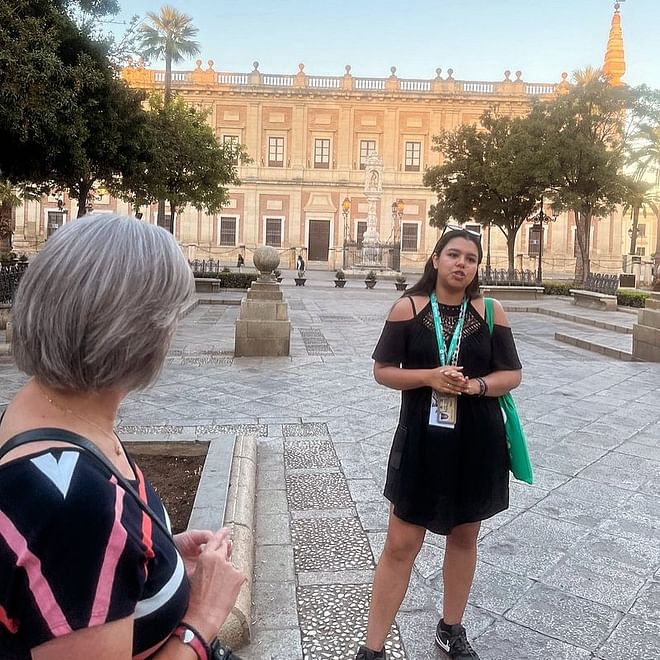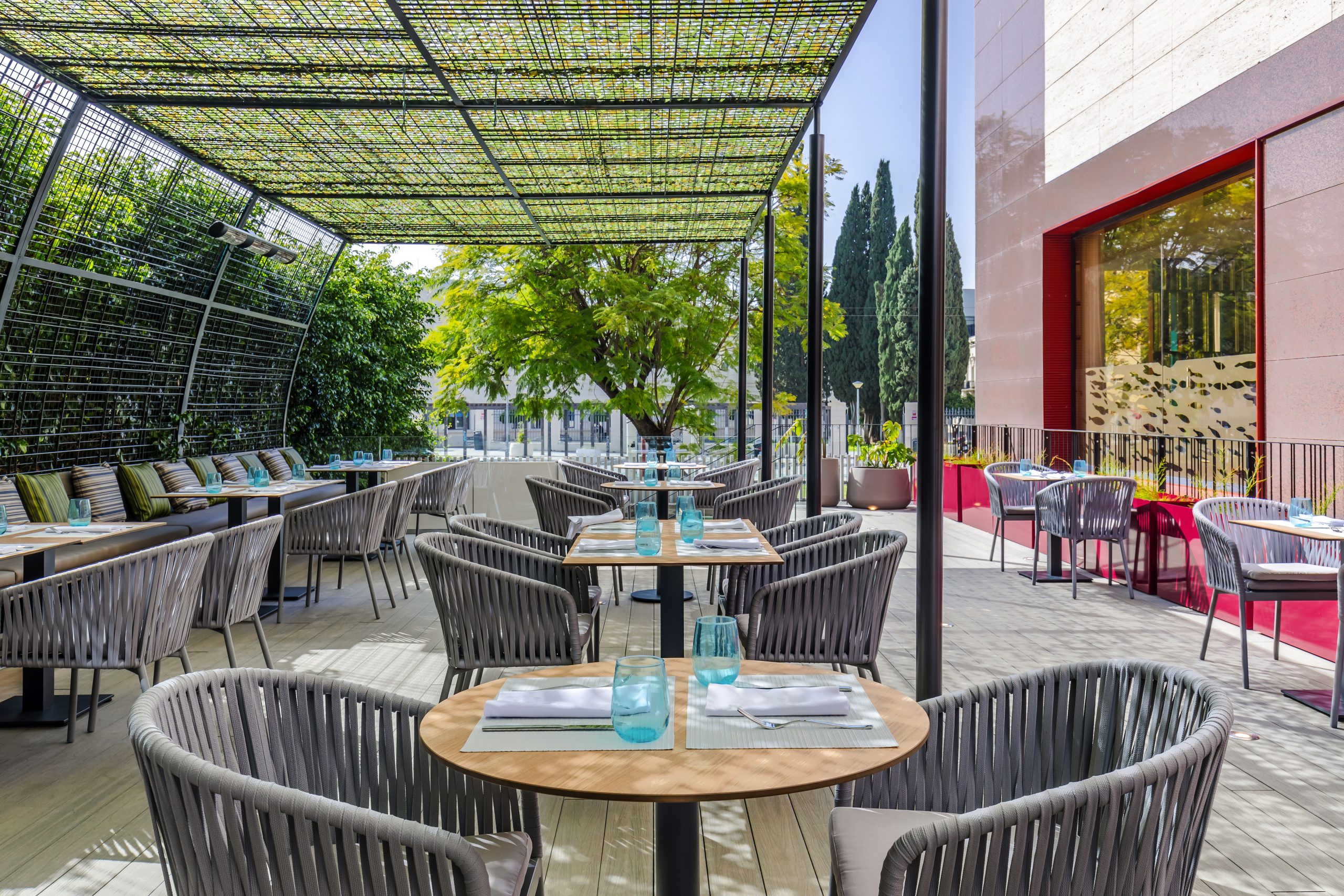The Hermandad de la Esperanza de Triana (Brotherhood of Hope of Triana) is one of the city’s oldest. It sets out as part of the Madrugá procession at the start of Holy Week in Seville, on the night of Maundy Thursday and arriving at dawn on Good Friday.
The brotherhood’s history dates back to the fifteenth century, when the Church of Santa Ana, with ties to potters, was founded. More than a century later, it merged with the fishermen’s guild. In the seventeenth century, it joined the brotherhood of Las Tres Caídas (the Three Falls).
It is one of the largest in terms of the number of brothers and Nazarenes, and is based in the Capilla de los Marineros (Sailors’ Chapel), from which the pasos (floats) Misterio de las Tres Caídas and Virgen de la Esperanza emerge.
The Misterio float has several figures, including a Roman centurion on horseback, showing the path to the Calvario to a Christ who falls for the third time carrying the cross. The paso is carried by 48 costaleros (bearers) who cause quite a stir by the way they walk, with changes in pace and direction. Its Nazarenes wear purple velvet habits with white cloaks.
On the other hand, the Virgen de la Esperanza de Triana (Our Lady of Hope of Triana) is covered by a canopy, and the Nazarenes wear green velvet habits with white cloaks. The Triana neighbourhood has the strongest devotion for this Virgin. Also known as the Queen of Triana, Our Lady of Hope is accompanied by Navy representatives.
The habits worn by these Nazarenes are the most expensive of all the brotherhoods in Seville. They consist of a velvet habit and mask, with a merino wool cloak and the brotherhood’s coat of arms embroidered in gold thread. The total price can exceed €700.
The llamador (ceremonial hammer) used by the capataz (overseer) to guide the weight-bearing costaleros has a naval theme, and one of the float’s side air vents features a small angel with a dummy hanging from a silver chain.
The Madrugá procession begins at dawn, and the float is fifth, following the Calvario brotherhood.
The most revered Virgin in Triana
Our Lady of Hope of Triana is one of the most popular images of the Virgin in Seville, along the lines of La Macarena. Although its original artist remains a mystery, the figure has been restored on numerous occasions over the years. In 1898, a fire broke out in the Monastery of San Jacinto, where the brotherhood was housed, causing serious damage to the figure. When it was restored by Jiménez Astorga, he created the Virgin’s current features. However, residents were not entirely convinced with the pearly appearance, and they longed for the dark colour of the Virgin’s skin. As a result, another restoration was carried out in 1913 by José Ordóñez, who painted shadows on the Virgin’s eyelids and brows, and brought back the warmer skin tone. At this point, the writer Eugenio Noel compared the Virgin to a bullfighter’s wife in his book on Seville’s Holy Week. Locals could finally recognise her Andalusian features. Like many other images, it was hidden during the Civil War so it would not be damaged. As part of the most recent renovation, new eyelashes and five glass beads were added, matching the original number and placement.
The Virgin has an extensive wardrobe, which is selected accordingly for the occasion in question. For the Madrugá dawn procession and the hand-kissing, the Queen is dressed with all of her jewels. One hand holds a life jacket, since she is the Virgin of the Sailors. During Lent, she dons the clothing of a Jewish person. In November she is dressed for mourning, and for the Immaculate Conception festivity she wears blue.
Capilla de los Marineros (Sailors’ Chapel)
Built in the eighteenth century, the Capilla de los Marineros (Sailors’ Chapel) has been used for a wide array of purposes. During the French occupation, the church was converted into a warehouse, and it has also been used as a theatre. It was recovered by the Brotherhood of Hope of Triana in the mid-twentieth century. The church was expanded in 2010 with the addition of new naves and two altarpieces. The central nave, which is also the oldest, contains the image of Our Lady of Hope of Triana on the main altarpiece, which was brought from the Convent of the Order of the Merced located in a village called Osuna. The side naves house the Three Falls of Christ and San Juan. The central chandelier, carved in glass, comes from what was the Gran Café Britz. It serves as a contrast against the carved Mudéjar ceiling made of red pine.
In one of the side naves, under a painting of Pope John Paul II, there is a golden frame with an inscription making reference to the papal bull that allowed the canonical coronation of Our Lady of Hope in 1982.
The chapel houses the Hope of Triana’s Devotional Treasure, where Our Sorrowful Lady’s wardrobe is stored along with the brotherhood’s entire artistic and cultural heritage.





























































